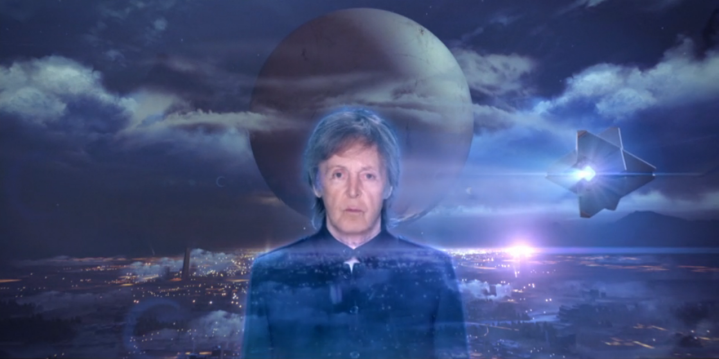
In the video, McCartney sings about the prospects of the future, including building bridges up to the sky, while taking the form of a holographic projection that Destiny gamers will notice mirrors the Ghost AI from the game. The song exclusively appeared on the ending credits of the video game back in September.
Today, “Hope For The Future” and four alternate remix versions of the song have been released as a digital bundle. McCartney informed NME he decided to make his first video game exclusive song in order to “infiltrate” video games after noticing his children and grandchildren ignoring his music due to heavy immersion in the gaming world.
Paul’s digital infiltration has been ramped up this year, exploring new means of digital distribution. Three weeks ago, McCartney’s August 14th performance of “Live and Let Die” at San Francisco’s Candlestick Park became the first entry in tech company Jaunt’s virtual reality cinematic library. The library is accessible on Jaunt’s virtual reality app which allows users to view the performance from a variety of angels.
Check out the music video for “Hope For The Future” below:


